
Lymantria dispar, also known as the gypsy moth or the spongy moth, is a species of moth in the family Erebidae native to Europe and Asia. Lymantria dispar is subdivided into several subspecies, with subspecies such as L. d. dispar and L. d. japonica being clearly identifiable without ambiguity. Lymantria dispar has been introduced to several continents and is now additionally found as an invasive species in Africa, North America and South America. The polyphagous larvae live on a variety of deciduous and coniferous trees and can cause severe damage in years of mass reproduction. Due to these features, Lymantria dispar is listed among the world's 100 worst invasive alien species.

The Lymantriinae are a subfamily of moths of the family Erebidae. The taxon was erected by George Hampson in 1893.

Lymantria is a genus of tussock moths in the family Erebidae. They are widely distributed throughout Europe, Japan, India, Sri Lanka, Myanmar, Java, and Celebes. The genus was erected by Jacob Hübner in 1819.
Tipasa is a genus of moths of the family Erebidae. The genus was erected by Francis Walker in 1863.

Homona coffearia, the tea tortrix or camellia tortrix, is a moth of the family Tortricidae. The species was first described by Nietner in 1861. It is widely distributed in the Oriental region.
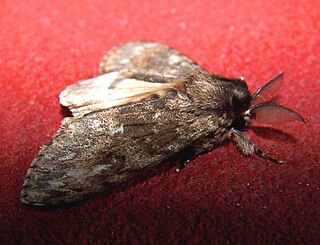
Lymantria serva, the ficus tussock moth or serva tussock moth, is a moth in the family Erebidae. It was described by Johan Christian Fabricius in 1793 and is found in Nepal, Sri Lanka, Assam in India and Yunnan in China. It is possibly also found in Taiwan and Hongkong, but these records might be Lymantria iris.

Anomis mesogona is a moth of the family Erebidae first described by Francis Walker in 1857. It is found in India, Sri Lanka, Somalia and Japan.
Casama vilis is a moth of the family Erebidae first described by Francis Walker in 1865. It is found in Sri Lanka, India, Middle East, Ethiopia, Kenya and Somalia.
Nygmia xanthomela is a moth of the family Erebidae first described by Francis Walker in 1862. It is found in Sri Lanka, Borneo, Java, Sumatra and Peninsular Malaysia.
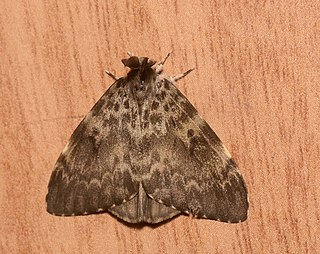
Lymantria ampla is a moth of the family Erebidae first described by Francis Walker in 1855. It is found in India and Sri Lanka.
Lymantria detersa is a moth of the family Erebidae first described by Francis Walker in 1865. It is found in India.

Lymantria fuliginosa is a moth of the family Erebidae first described by Frederic Moore in 1883. It is found in Sri Lanka and India.
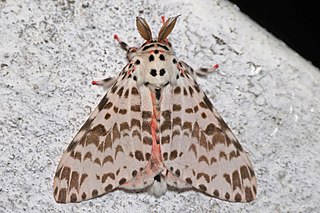
Lymantria grandis is a moth of the family Erebidae first described by Francis Walker in 1855. It is found in Sri Lanka.
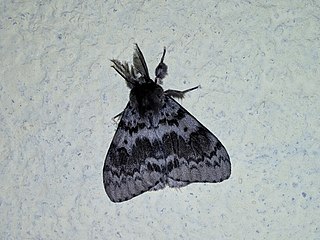
Lymantria incerta is a moth of the family Erebidae first described by Francis Walker in 1855. It is found in India and Sri Lanka.
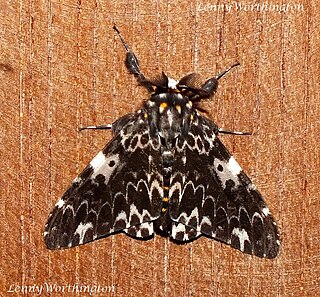
Lymantria marginata is a moth of the family Erebidae first described by Francis Walker in 1855. It is found in India, Bangladesh, Sri Lanka and Thailand.

Lymantria todara is a moth of the family Erebidae first described by Frederic Moore in 1879. It is found in India (Nilgiri) and Sri Lanka.

Amblychia angeronaria is a moth of the family Geometridae first described by Achille Guenée in 1858. It is found in Sri Lanka, northern India, Korea, Andaman Islands to Taiwan, Borneo, Sumatra, Korea Japan and Australia.
Astygisa vexillaria is a moth of the family Geometridae first described by Achille Guenée in 1858. It is found in Sri Lanka, the Indian subregion and Sundaland.
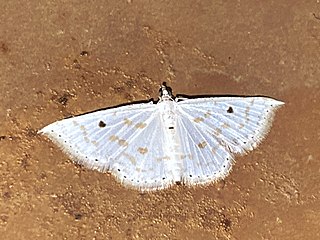
Derambila lumenaria is a moth of the family Geometridae described by Carl Geyer in 1837. It is found in Sri Lanka, India and Sundaland.

Dysphania palmyra, the long blue tiger moth or blue day moth, is a moth of the family Geometridae. The species was first described by Caspar Stoll in 1790. It is found in India and Sri Lanka.















